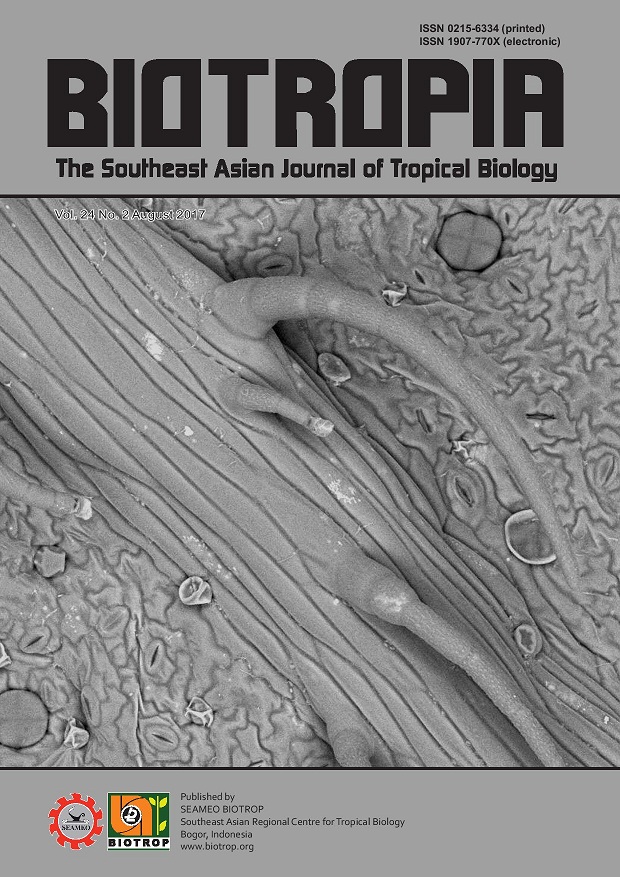
SEAMEO BIOTROP
Southeast Asian Ministers of Education Organization
592
views
Tags
IDENTIFICATION OF SECRETORY STRUCTURE, HISTOCHEMISTRY AND PHYTOCHEMICAL COMPOUNDS OF MEDICINAL PLANT Hyptis capitata Jacq.
23 May 2019 - 12:29 pm (6 year ago)
Content Language : English
Content Language : English

Category :
Life Science
Hyptis capitata Jacq. (common name: Knobweed or False Ironwort) belongs to Lamiaceae family and is among known traditional medicine. The Anak Dalam Tribe of Jambi Province uses the leaves of H. capitata to cure external and internal wounds. This study was aimed at identifying and analyzing secretory structure, histochemistry and phytochemical content of H. capitata leaves. The results showed that H. capitata leaves have secretory structures in the form of peltate, capitate and uniseriate glandular trichomes on the upper and lower leaf surfaces, with idioblast cells scattered throughout the leaf mesophyll. Histochemical tests indicated that the peltate trichomes have four head cells, containing alkaloids and terpenoids. This study classified capitate trichomes into two types: 1. type I has one stalk cell and two head cells, all containing alkaloids, terpenoids and lipophilic compounds; 2. type II has long stalk cells consisting of seven to ten cells with one head cell, all containing alkaloids and terpenoids. Uniseriate glandular trichomes of H. capitata leaves consist of four to eight cells containing alkaloids and terpenoids. The idioblast cells are round-shaped and contain lipophilic compounds. GC-MS analysis showed that H. capitata leaves contain terpenoid compounds assumed to serve as anti-infective agents, including l-limonene, eugenol, farnesol isomers A, d-nerolidol, hexahydrofarnesol and neophytadiene.
Link

This work is licensed under a Creative Commons Attribution-NonCommercial-NoDerivatives 4.0 International License.
